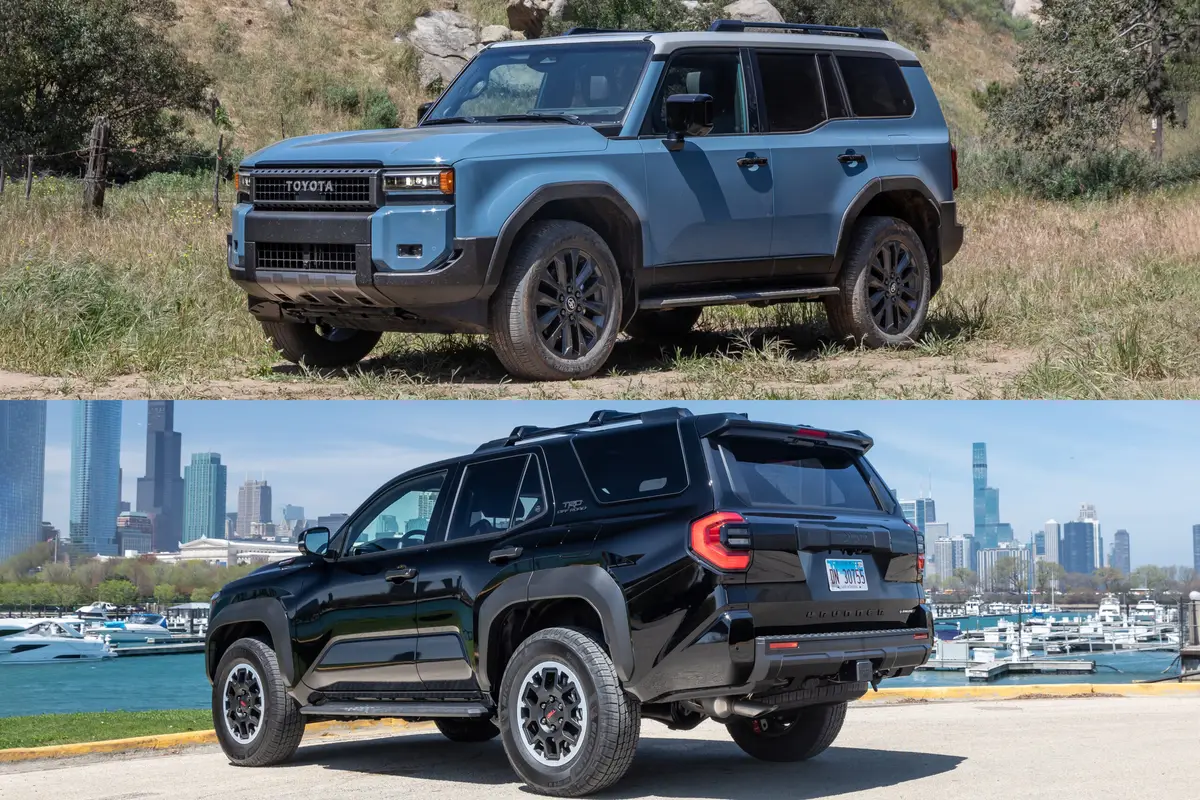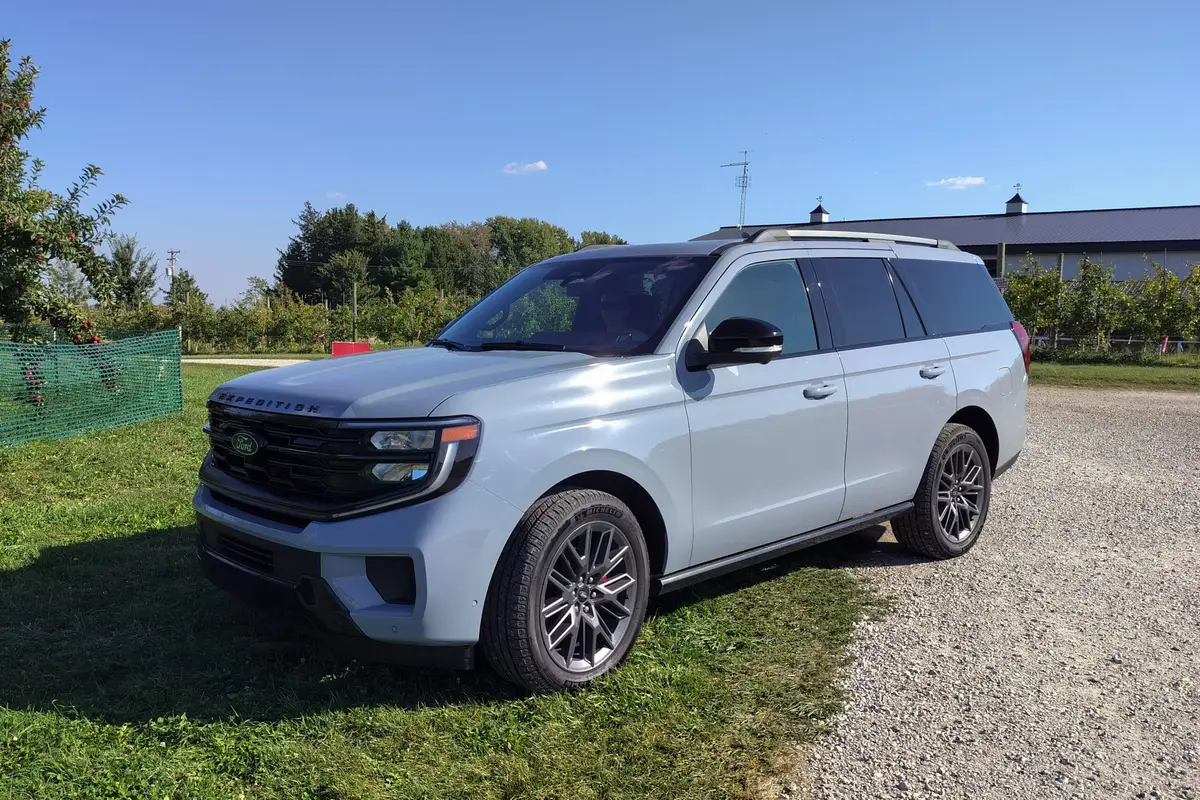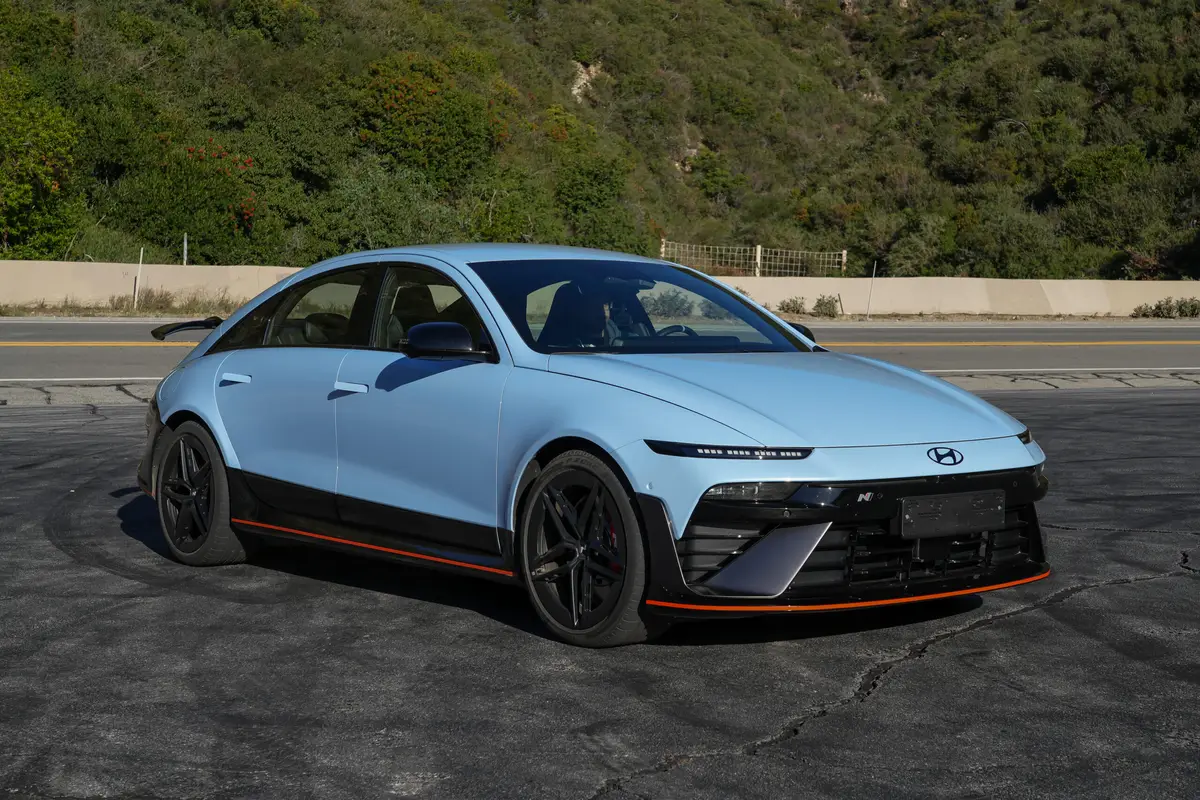The Overachieving EV: A GMC Hummer Pickup?

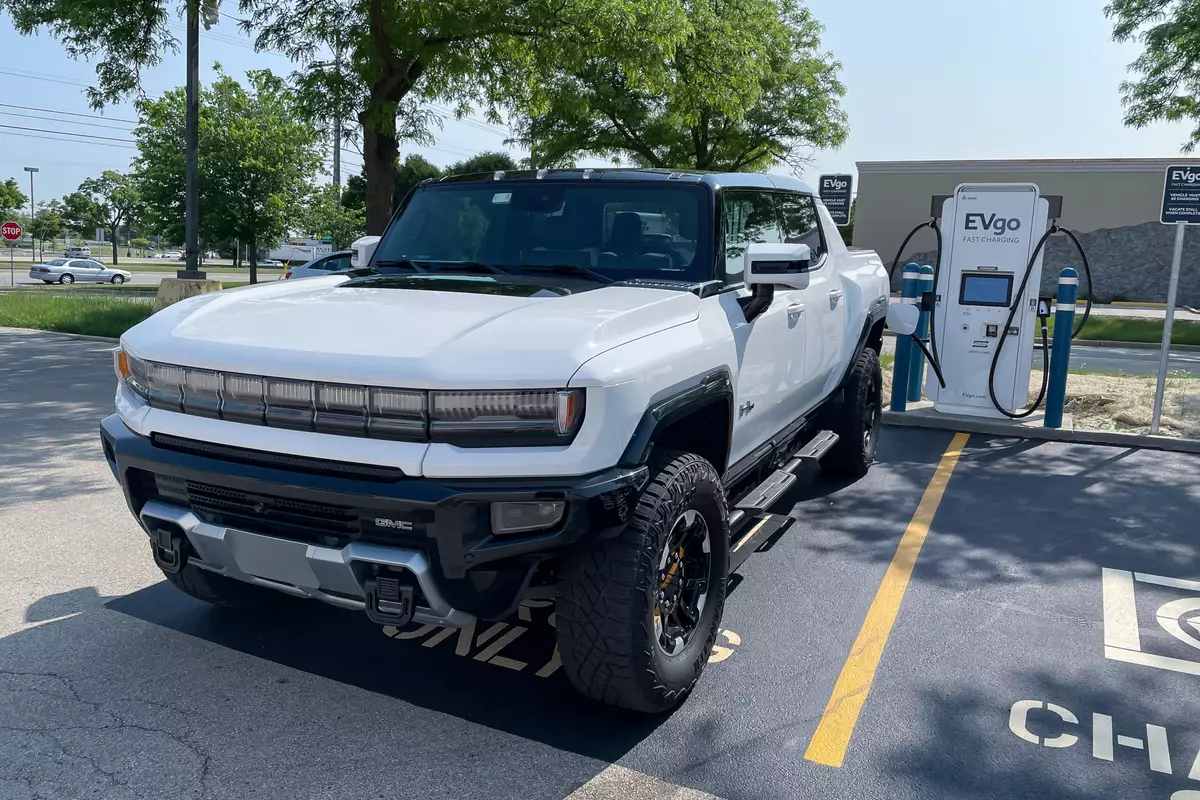
In my mind, there was little chance the 2022 GMC Hummer EV Pickup Edition 1 would get me back home from a 320-mile round trip without needing to stop for charging. Surely, GMC’s estimated driving range of 329 miles would be demolished by the route’s nearly all highway speeds and the Hummer’s houselike aerodynamics. I was shocked that not only did the Hummer make the whole round trip without seeing a plug, but it had 15% battery and 58 miles of range left after driving 336 miles. Of all the electric vehicles to exceed their range estimates, I didn’t think the one to do so would be a hulking off-road pickup truck with knobby 35-inch off-road tires and 1,000 horsepower.
Related: 2023 GMC Hummer EV Pickup Review: Awesome in Nearly Every Way
Exceeding Range Expectations

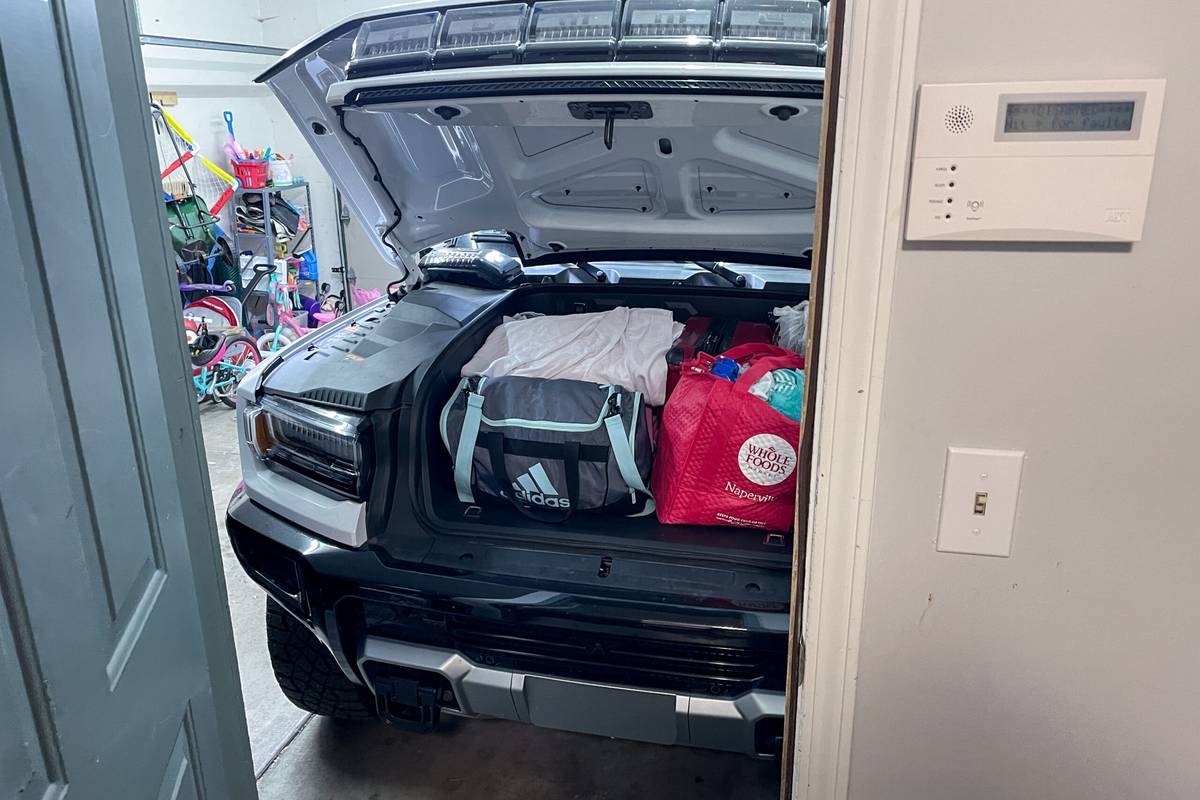

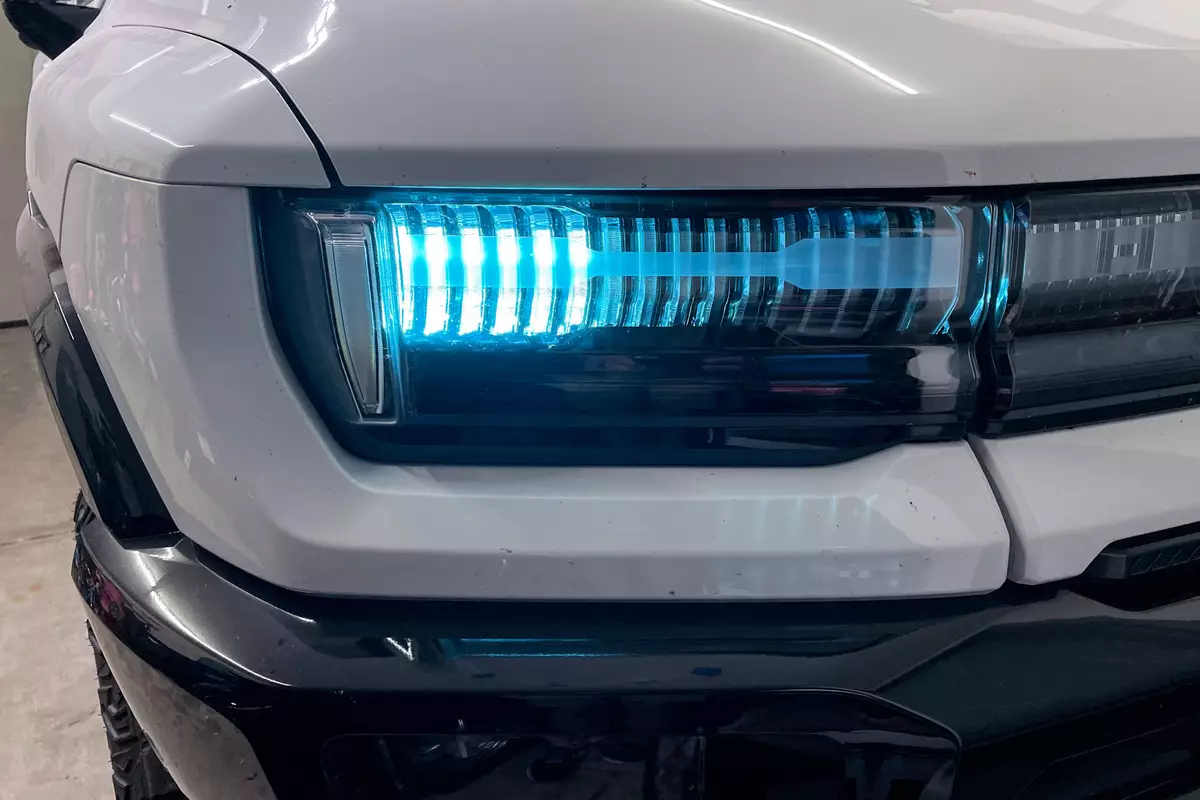
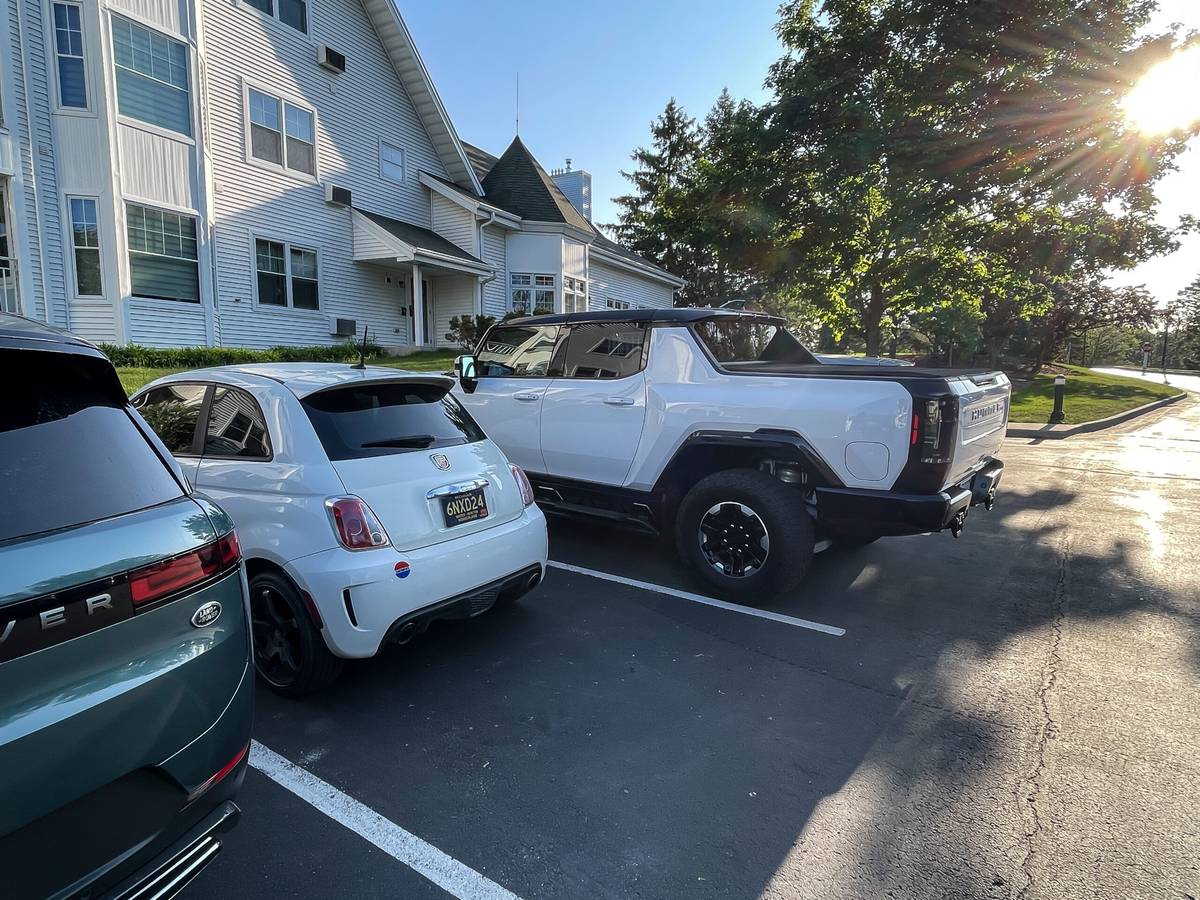







In complete transparency, this wasn’t a standardized range test with repeatable methodology like we’ve performed on other EVs. I simply wanted to do normal road-trippy things, so I drove in a way to maximize efficiency in an effort to not be terribly inconvenienced by long charging times because of the Hummer’s huge-capacity 212.7-kilowatt-hour battery (most EV batteries are less than 100 kWh). Traveling from the Chicago suburbs to Elkhart Lake, Wisc., my initial goal was to drive around 220 miles without charging, which included 160 miles to the destination (the Midwest Automotive Media Association’s 2023 Spring Rally) plus an additional 60 miles on the return trip to one of the few 350-kilowatt DC fast chargers in Wisconsin.
To get the most efficiency from the Hummer EV pickup, I put its acceleration in Relaxed mode and drove no faster than 70 mph. I resisted accelerating past slower-moving traffic, instead letting the adaptive cruise control follow cars for long distances, even if they were slower than most traffic. Averaging 58 mph on the drive north, I wasn’t holding up traffic in the right lane, either, and total drive time was just seven minutes over the initial projected arrival time.
At the end of the first leg’s 164 miles, the trip computer’s reported 1.9 miles per kWh was a shocker, putting the Hummer EV mathematically capable of 404 miles of range at this efficiency, far exceeding its 329-mile rating. This is where the goal shifted from 220 to 320-plus miles to see if I could get back home without charging. At this point, the Hummer was reporting 213 miles of remaining range, and it was 160 miles back home (plus a few miles of around-town driving). Using the same style of driving on the way back, the Hummer averaged 1.8 miles per kWh after driving 336 miles, which works out to a total potential range of 383 miles — 16% better than its rating.
Did careful driving really make that big of a difference? Or is the Hummer EV pickup capable of better range than GMC claims? On a second, shorter road trip in the Hummer, I put acceleration in the Normal driving mode, didn’t impose any hard speed limits and generally drove more like I normally do. Conditions were different, however, with observed temperatures as much as 17 degrees Fahrenheit cooler (64 versus 81 degrees), and more weight in the form of my family of four plus a truck bed and front trunk full of luggage, tools and supplies for an extended weekend away (around 90 miles each way).
The Hummer continued to impress, averaging 1.6 miles per kWh after 206 miles of mostly highway driving, or 340 miles of potential range. That remains impressive considering highway efficiency is normally reduced compared with combined and city ratings. Despite the more normalized driving (versus trying to save energy), this trip averaged 43.2 mph — about 4.5 mph slower than the hero trip earlier in the week — which could have helped efficiency. That said, I couldn’t return the Hummer without trying the full-power Watts to Freedom launch control mode or driving with the roof off and windows down, which were both very enjoyable even if they weren’t great for efficiency. It’s worth noting that these results in mild and warmer weather were very different from our experience with the Hummer EV pickup when the weather was colder, which isn’t unexpected.
Google Built-In Redemption












Cadillac, Chevrolet and GMC vehicles have been adopting the Google Built-In user interface that incorporates Google functionality into the multimedia and vehicle control system. Instead of using Google Maps via Apple CarPlay or Android Auto, you use the Google Maps application in the car’s main touchscreen. And while Google Maps in the Hummer still exhibited the startup latency and jagged movements that prompted a reaction of “Why bother?” in other cars, Google Built-In unlocks an invaluable feature for EV owners: trip planning with EV charging.
It remains head-scratching, but few automakers provide EV trip planning like Tesla, where an entered navigation route includes stops and estimated times for charging. Using the Hummer’s Google Built-In Google Maps, entering a route from Chicago to New York City included five charging stops, estimates of how long to charge at each stop, as well as the overall route time of 15 hours, 12 minutes.
Google Maps also shows a charging station’s charging speed in the form of “fast” or “very fast” chargers, the latter when they’re capable of 150 kW or more. Another bonus: Google Maps via the Hummer’s system was showing recently added charging stations that weren’t appearing in the native navigation systems of other EVs we had recently tested. As we’ve observed in our ownership of a Tesla Model Y with EV trip planning, this functionality eases range anxiety since the car does the planning for you and is constantly monitoring efficiency and projected range to make sure you get where you want to go without running out of battery. On the downside, you’ll need an active subscription to use Google Built-In’s Google Maps after a three-year free trial runs out.
Promising DC Fast Charging
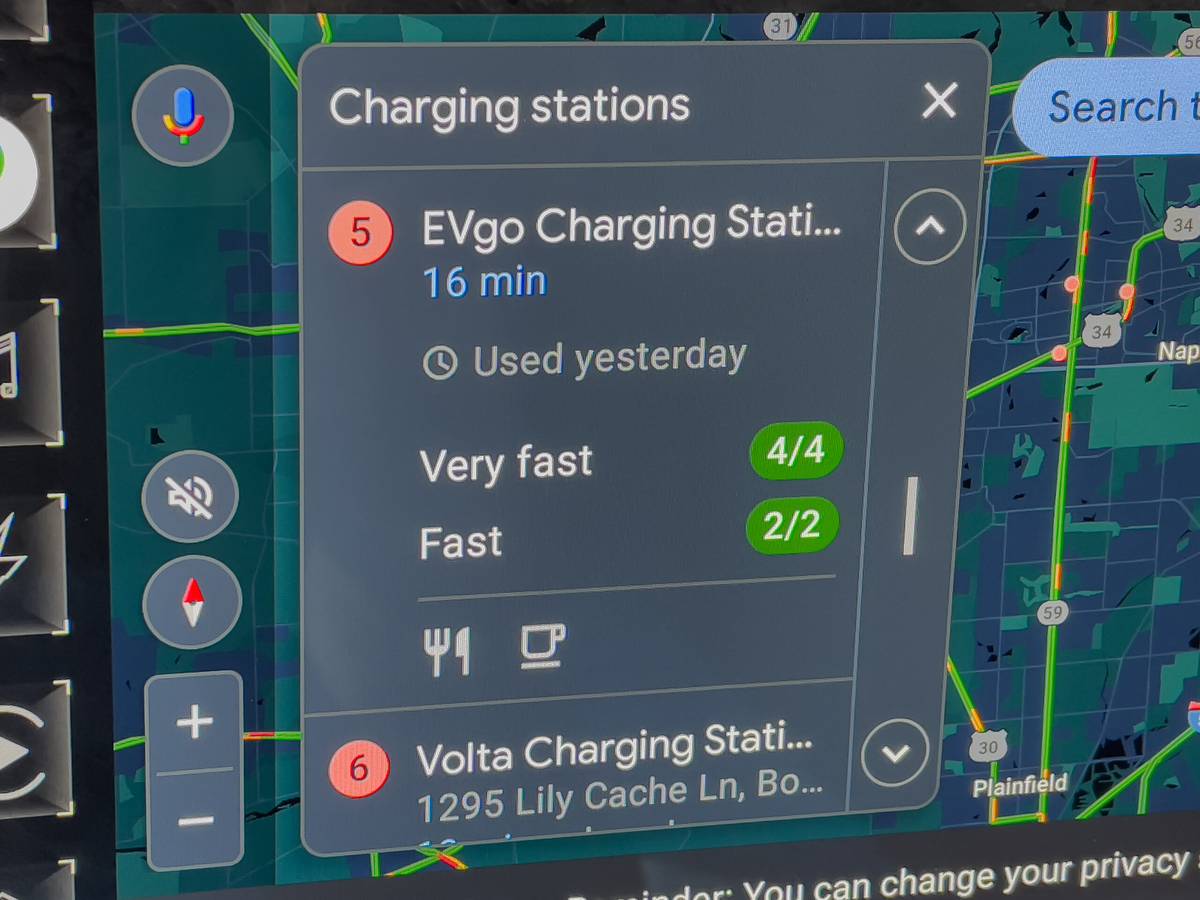













I didn’t give the Hummer a good chance to showcase its powerful 800-volt DC fast-charging speed, instead charging from 59% to 96% rather than our normal DC fast-charging testing where we charge from around 20% to 80%; DC fast charging is usually the fastest at a lower state of charge where the battery can accept the most power before slowing at around 80% to protect battery health.
Charging from 59%-80% took 22 minutes and added 60 miles of range for 2.72 miles of range per minute, well below the fastest 8-9 miles of range per minute we’ve added in more efficient cars that add more miles for each kWh. GMC says the Hummer EV pickup can add up to nearly 100 miles of range in as little as 12 minutes, though that will depend on a number of factors that include battery charge percentage, ambient temperature and charging-station power.
At its peak, I saw 190 kW when first plugged in, but what was most interesting was that the Hummer was charging at over 100 kW even past 80% before it gradually declined to 29 kW at 96%. This caught my attention because the Hummer EV’s charging power after 80% was more than we’ve observed in some 400-volt, 150-kW EVs before 80%, and that’s an advantage due to the Hummer’s ability to accept more power through its 800-volt charging capability.
This particular session was to get to 100% before my departure to Wisconsin, and going from a 59%-96% state of charge added 116 miles of predicted range in 1 hour, 1 minute, or 1.9 miles per minute. As in most non-Tesla Supercharger DC fast-charging experiences, something went awry, with a fault at 96% state of charge communicated via the truck that stopped the charging session and resulted in no final report on charging session performance. It’s hard to pinpoint whether it was the vehicle or the charging station, but don’t worry: I was still charged $20 for the 116 miles of driving range.
At home on my 40-amp Level 2 charger, I was adding 14 miles of range per hour charging at 9.5 kW, and it took a very long 20 hours, 50 minutes to charge the battery from 15% to 100%, adding 192.5 kWh. Most people shouldn’t need to regularly charge like this, but I needed to replenish range for the second road trip. Because this charging session was after my long and relatively efficient trip, the Hummer’s range prediction was more optimistic, showing 363 miles of available range at 100% versus 329 miles when I took delivery of the car.
Related Video:
Who Is This For?
I don’t believe the GMC Hummer EV pickup is suited for a particular lifestyle or life stage (family, luxury, economy, performance, off-road) because it’s such a ridiculous, over-the-top vehicle. And that’s OK; I enjoyed every mile in the truck. Its compact-car-like turning circle comes from aggressive rear steering that allows the rear wheels to peek out from the rear fenders, and the Lexus-like ride quality was utterly serene at highway speeds. As a Pontiac Firebird owner, I’m also a proponent of “save the T-tops,” and I was glad to see four in the Hummer.




Also, I was surprised that the truck was smaller than it looks in person, fitting better in my garage than an all-electric F-150 Lightning pickup; at 216.8 inches long, the Hummer EV truck is only 3.6 inches longer than a mid-size 2023 GMC Canyon crew cab with a 5-foot cargo box (nearly identical to the Hummer’s bed length), but it’s 14.9 inches shorter than the F-150 Lightning, which has a cargo box that’s half a foot longer. One thing I’d add, however, is a more rigid tonneau cover because the flimsy Velcro-strapped one was hard to maneuver while staying on its track. We opted for a hard roll-up cover for our long-term Ford Maverick pickup truck after being unhappy with a similar Velcro-secured bed cover for our long-term Ford F-150.
The Hummer EV Pickup Edition 1 is a showcase of technology, and the observed practical experiences show a lot of promise for future GM electric vehicles and the automaker’s Ultium architecture (with smaller, lighter batteries). The efficiency, charging power and integrated systems could all make for an extremely competent and competitive small SUV, and those are on the way in the form of the Chevrolet Equinox EV and Blazer EV, as well as more trucky things like the Chevrolet Silverado EV and GMC Sierra EV. I look forward to driving those when they’re available.
More From Cars.com:
- Living With a GMC Hummer EV: 5 Things You Need to Know
- 2022 GMC Hummer EV Pickup Quick Spin: An Untimely Collection of Excellent Thinking
- Electric Hummer Performance Specs Are Out … and They’re Bonkers
- GMC Hummer EV Pickup Hits the Streets With 329-Mile Range, 7,500-Pound Max Towing
- Cadillac Teases All-Electric Escalade IQ
Cars.com’s Editorial department is your source for automotive news and reviews. In line with Cars.com’s long-standing ethics policy, editors and reviewers don’t accept gifts or free trips from automakers. The Editorial department is independent of Cars.com’s advertising, sales and sponsored content departments.

Managing Editor Joe Bruzek’s 22 years of automotive experience doesn’t count the lifelong obsession that started as a kid admiring his dad’s 1964 Chevrolet Corvette — and continues to this day. Joe’s been an automotive journalist with Cars.com for 16 years, writing shopper-focused car reviews, news and research content. As Managing Editor, one of his favorite areas of focus is helping shoppers understand electric cars and how to determine whether going electric is right for them. In his free time, Joe maintains a love-hate relationship with his 1998 Pontiac Firebird Trans Am that he wishes would fix itself. LinkedIn: https://www.linkedin.com/in/joe-bruzek-2699b41b/
Featured stories
